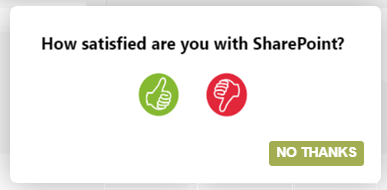
In this article, we'll explore the challenges of implementing new software for your team. We'll also offer some helpful solutions to overcome digital adoption challenges.
When you log in to the usage analytics dashboard of your company’s IT system, what story do the numbers tell?
For some companies, adoption rates are consistently high. However, for the majority, a different story emerges. Companies often see that their teams start out using a new product or service with a lot of interest, but then they use it less and less over time.
This is like when you get a new toy. You play with it a lot at first, but then you get bored of it and stop playing with it as much.
Another common pattern companies see is that users only access the most basic features of a platform and avoid everything else.
Digital adoption problems such as these continue to hamper organizations of all sizes. Let's explore some of these challenges and look at possible solutions.
Before we get into the challenges of digital adoption, let's first establish what digital adoption is. Digital adoption describes how widely and proficiently employees use business technology within an organization.
In a company with high levels of digital adoption, all employees can do their tasks competently and rarely encounter obstacles with the system. They feel confident completing their processes and hardly ever need to raise support tickets.
Here are the biggest challenges when it comes to digital adoption of IT platforms:
Resistance to change is a big hurdle in digital adoption. People may not want to give up their old ways and learn new tech. They may worry about losing their jobs or not being able to use the new stuff. Employees resist new software when they don't understand the benefits of digital transformation or they're afraid they won't be able to do it.
To help with this, create a strong change management plan that addresses the concerns of your team members. Take proactive steps to get employees excited about using the new software. Appoint a change management champion to work alongside you and boost employee enthusiasm.
One of the biggest problems with digital adoption is that software training is often insufficient. People using platforms like Dynamics or SharePoint cannot possibly be expected to learn to use these platforms comprehensively with just a day or two of training sessions. It often takes several weeks to train employees to become fully proficient with these tools. As a consequence, many are left to figure out how to use the technology by themselves.
Instead, provide ongoing resources to support your teams. You could create regular lunch and learn sessions, or you could utilize a Digital Adoption Platform (DAP). A DAP lays over any web enterprise application and provides users access to in-context help. This helps them learn in the flow of their work and empowers them to learn more independently.
The complexity of digital tools can pose a significant barrier to adoption. If technology is overly complex or lacks a user-friendly interface, employees may find it difficult to learn and use effectively, leading to disengagement and a reluctance to embrace the new system.
To fix this, choose user-friendly tech that is easiest for your employees to learn. As you are choosing new software, consider their technical skills and preferences. It's also vital that you regularly ask team members to provide feedback on the platform.
Collecting feedback doesn't have to be complicated. For example, VisualSP (a DAP that lays over any web enterprise application) allows companies to conduct quick pulse surveys that pop up in-app and ask users how they are enjoying the software. They are also able to provide more info with comments.

One challenge many companies face is they don't know how to measure the success of digital adoption. These metrics are important because they help you see how many people are using the tech and how they are using it (which is vital to making sure you get an ROI). Here are some metrics to consider:
Without strong leadership and support from executives, digital transformation initiatives may lack the necessary resources, commitment, and direction to succeed.
To increase executive buy-in, provide executives with a comprehensive understanding of the benefits and impact of this digital transformation. Show how the new tech may align with the organization's goals. It's also important to involve them in the planning, decision-making, and implementation process of your digital transformation initiatives. Report back to them on early successes that reinforce the value of the new tool.
Without a clear and well-defined digital strategy that aligns with overall business goals, digital adoption efforts may lack direction and fail to deliver desired outcomes. A digital strategy serves as a roadmap, guiding the organization's digital transformation journey by establishing clear objectives, identifying target areas, and prioritizing initiatives.
Here's a detailed guide that takes you step by step through creating a digital strategy.
The amount of time that employees spend working with advanced digital technology is only going to increase over the coming years. According to McKinsey, time spent using IT will increase by some 50% by the end of the decade. That's why you must address these challenges now, to ensure successful digital adoption in the future.
Fuel Employee Success
Stop Pissing Off Your Software Users! There's a Better Way...
VisualSP makes in-app guidance simple.